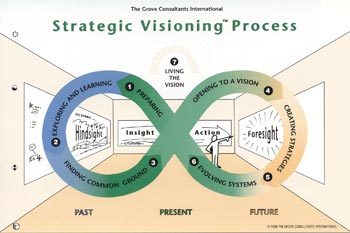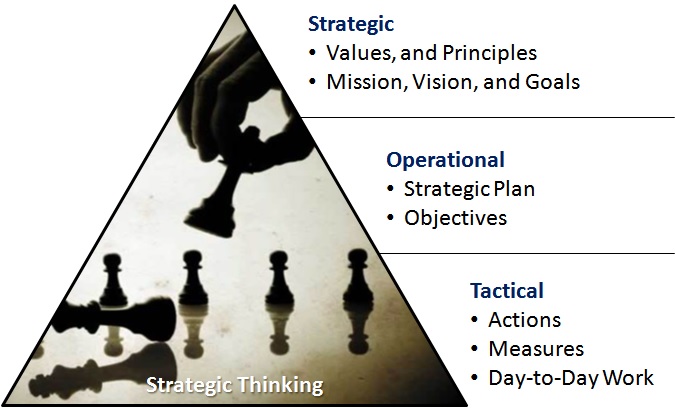Would you say that you have a strong network?
Do you realize the power of a strong network?
Do you even realize that networks exist?
Some people try to solve everything themselves. If they don’t know how to do it, they may try and do it partially well, or miserably fail.
However, having a strong network can make all the difference in the world.
To some, building a network might seem like an admission of failure on their part–like they can’t do something themselves. This is far from the truth. Think of a network as part of your skill set.
It’s through a network that you truly can solve problems and get things done.
There is a guy I work with that is extremely skilled at building a network. Not just any network though, this network is of people who get things done around the building. He always knows who to call. He is literally known for his network.
Networks can help you in other ways too. They can open doors to new opportunities at work or in other places. The type, level, and caliber of that network defines the type of opportunities that might become available.
Some networks are designed to help you better understand your customer because the network is with your customers themselves. Networking with the people that you work with and for can be very helpful for gathering information regarding their needs and allows you to better understand what is happening before it happens.
Some networks are of a professional development nature. These are the type of networks of professionals in your chosen line of work. Building connections in these areas helps you open up your understanding of new concepts and ideas.
The last important network is a social network. I’m not specifically talking about social media like Facebook, although that is a type, but more of a network around your personal interests, like horses, golf, church, quilting, etc. Having a strong and broad network in these interest areas provides greater opportunities for you to enjoy the things you love.
Simply understanding that these networks exist is important for you to cultivate them. I think that some of us have one or more of these networks, but fail to realize that they even exist.
When I was in the Air Force, as I moved from base to base, I would quickly build a professional network through professional military organizations. This network was fraternal in nature and these connections last still today. However, this network also led to the type of network that allowed me to get things done on base that others couldn’t because of red tape. Generally a solution was simply a phone call or email away. This network also opened up professional opportunities that weren’t overly obvious to me at first.
For a while I simply took these things for granted, like everyone had these opportunities, but I eventually learned that what I was doing resulted in building these networks and they were not by happenstance. By understanding this, I realized the potential of these types of networks and increased by personal investment in building and maintaining them.
Today you have networks that you operate within. The question is do you realize that they even exist and are you focused on investing in them?


 Leadership is a dying art in the world today. The great leaders of the past are found few-and-far between these days. There are some that have been fairly successful that have rose to an iconic status, but have they been truly great leaders or just really successful at running something?
Leadership is a dying art in the world today. The great leaders of the past are found few-and-far between these days. There are some that have been fairly successful that have rose to an iconic status, but have they been truly great leaders or just really successful at running something?


 Leadership is a dying art in the world today. The great leaders of the past are found few-and-far between these days. There are some that have been fairly successful leaders that have rose to an iconic status, but have they been truly great leaders or just really successful at running something?
Leadership is a dying art in the world today. The great leaders of the past are found few-and-far between these days. There are some that have been fairly successful leaders that have rose to an iconic status, but have they been truly great leaders or just really successful at running something?

 Leadership is a dying art in the world today. The great leaders of the past, George Washington, Winston Churchill, Alexander the Great, Martin Luther King, even Adolph Hitler, are found few-and-far between these days. There are some that have been fairly successful, like Steve Jobs for instance, that have rose to an iconic status, but have they been truly great leaders or just really successful at running something?
Leadership is a dying art in the world today. The great leaders of the past, George Washington, Winston Churchill, Alexander the Great, Martin Luther King, even Adolph Hitler, are found few-and-far between these days. There are some that have been fairly successful, like Steve Jobs for instance, that have rose to an iconic status, but have they been truly great leaders or just really successful at running something? Start with a Strategic Mindset.
Start with a Strategic Mindset. Harness the Power of Positive Thinking.
Harness the Power of Positive Thinking. Establishing Key Interpersonal Skills.
Establishing Key Interpersonal Skills. Developing a Personal Business Focus.
Developing a Personal Business Focus. Your Health and the Leader Within You.
Your Health and the Leader Within You. Volunteerism — The Personal Training Ground for Personal Development.
Volunteerism — The Personal Training Ground for Personal Development.